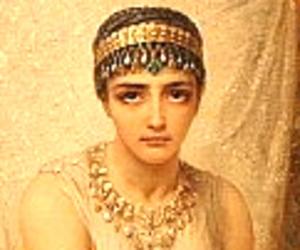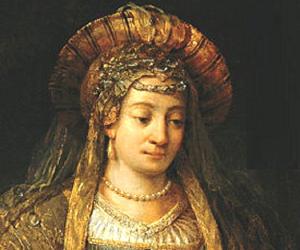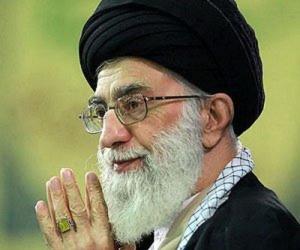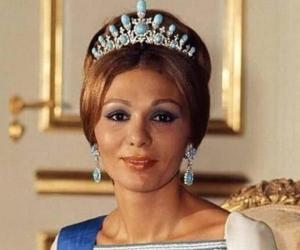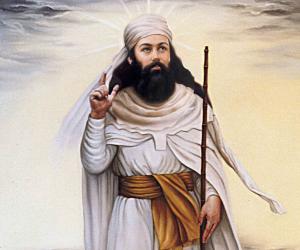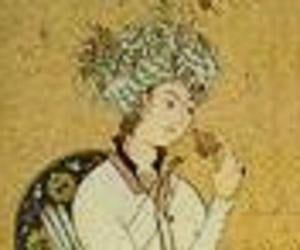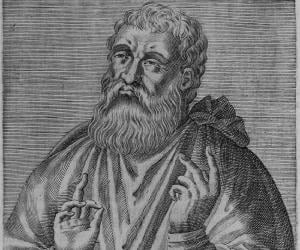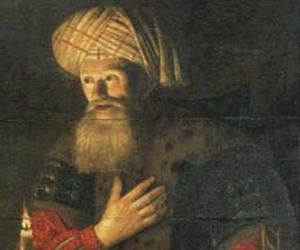Life & Actions of Esther
Many scholars believe that the name “Esther” was inspired by “Ishtar,” the ancient Mesopotamian goddess of love, beauty, desire, sex, fertility, justice, political power, and war. It is also said to be derived from the Persian word “stara,” meaning “star.” Some suggestions in the ‘Talmud,’ the ‘Yalkut Shimoni,’ and in the Aramaic translation and elucidation of the ‘Book of Esther’ (called ‘Targum Sheni’) state that the name “Esther” was derived from “Venus,” the morning star named after the Roman goddess of love and beauty.
According to the ‘Book of Esther,’ Esther was a Hebrew woman in Persia whose birth name was Hadassah. She was the daughter of Abihail and had become an orphan in her childhood. Following this, she was adopted by her cousin, Mordecai (‘Esther’ 2:7). Mordecai, the son of Jair, of the tribe of Benjamin, raised Esther as his own daughter.
The book elucidated that during a festival, a heavily drunk King Ahasuerus ordered Queen Vashti to come before the guests wearing her crown and to show her beauty (1:10–11). Infuriated by the queen’s refusal to obey his order, Ahasuerus banished Vashti. He then started searching for a new queen from a selection of beautiful virgins from across the empire (2:1–4). Esther was one of the beautiful maidens who were taken to the harem in the citadel of Susa, which was under control of the eunuch Hegai.
Hegai took Esther to the palace and prepared her to be placed before the king. Although, with time, Esther bolstered her position in the harem, being perfumed with myrrh and granted servants and the choicest foods, Mordecai, who visited her daily, gave her strict instructions not to reveal her Jewish origin. Struck by the beauty of Esther, the king went on to marry her and made her the queen. Sometime later, Mordecai discovered and successfully foiled an assassination plot made against the king by his chamberlains Bigthan and Teresh.
Meanwhile, Haman the Agagite was elevated to the top-most position in the court. He was made the king’s viceroy (3:1). A decree was passed by the king that all should bow down before Haman. When Mordecai refused to do so (3:2–5), an infuriated Haman decided to kill Mordecai as well as all the Jewish exiles across the Persian Empire (3:6). Haman then obtained the king’s permission to execute his plan. An imperial decree was issued across the kingdom to kill all Jews on the 13th of the month of ‘Adar’ (3:13–15).
After Mordecai came to know about Haman's scheme, he communicated it to Queen Esther and asked her to reveal her Jewish background to the king. Initially afraid of meeting the king unsummoned, Esther told Mordecai to ask the Jews to fast for 3 days and said that she would also do so (4:15–16.).
She went to see the king on the third day of her fast, when the king stretched out his scepter to her, assuring that she would not be punished (5:1–2). She then invited the king and Haman to a feast (5:3–5). At the time of the feast, she invited them to another feast, the following evening (5:6–8). Meanwhile, Haman built gallows to hang Mordecai.
The king could not sleep that night and recollected Mordecai’s efforts in foiling an assassination plot against him. When Haman appeared before the king to seek permission to hang Mordecai, the king asked Haman how he could honor a man who had been of great service to him (6:4–6). Thinking that the king was talking about him, Haman advised that the man should be dressed in royal robes and the crown of the king, mounted on the king's royal horse, and glided around while a herald called "See how the King honors a man he wishes to reward!" (6:7–9). Haman was horrified and totally taken aback when the king instructed him to follow this for Mordecai (6:10–11).
The following evening, when the king and Haman attended Esther's second banquet, the king promised her to grant any request that she made. This time, she disclosed that she was a Jew and that Haman was plotting to kill all the Jews including her (7:1–6). While the king left the room out of fury, a horrified Haman threw himself at Esther’s feet out of desperation (7:7). At this point, the king entered the room and thought Haman was making a sexual advance on Esther. The outraged king then ordered that Haman be hanged on the same gallows that the latter had prepared for Mordecai (7:8–10). Haman was hanged accordingly.
The king also allowed the Jews to destroy the ones who were trying to kill them (8:1–14). On the 13th of the month of ‘Adar,’ the day when Haman’s plot was scheduled to be executed, the Jews killed the 10 sons of Haman and 500 other men in Shushan (9:1–12). On Esther’s request, they repeated the massacre the following day, killing 300 more men (9:13–15). A total of more than 75,000 people were killed by the Jews who, however, refrained from engaging in any more plunder (9:16–17). Esther and Mordecai then sent letters across the provinces and declared the 14th day of the Hebrew month of ‘Adar’ a Jewish holiday named Purim. This was done to commemorate the saving of the Jewish people from Haman. Mordecai was elevated to a prominent position in the king’s court following Haman’s death (10:1–3).
Persian Tradition, Legacy, & Depictions
According to some sources, the tomb of Esther and Mordecai in Hamadan, Iran, which is considered the most important pilgrimage site for Iranian Jews, houses the remains of Esther and Mordecai. Some other sources believe that the graves of the queen and Mordecai lie in the ancient Jewish village of Kfar Bar'am in northern Israel.
The modern-day Persian Jews or Iranian Jews are referred to as "Esther's Children.” She is celebrated as a matriarch on May 24 in the ‘Calendar of Saints’ of the ‘Lutheran Church–Missouri Synod.’ The ‘Eastern Orthodox’ and ‘Coptic Orthodox’ churches also acknowledge her as a saint.
Many paintings made by prominent artists over the centuries depict parts of the stories of Esther. Some of these include a series of six panel paintings by Filippino Lippi and Sandro Botticelli of the 1470s, known as ‘Life of Esther,’ or ‘Three Scenes from the Story of Esther’; ‘Esther before Ahasuerus’ (1546–1547) by Venetian painter Tintoretto; ‘Ahasveros and Haman at the Feast of Esther’ (1660) by Rembrandt van Rijn; ‘Esther before Ahasuerus’ by 17th-century Italian artist Artemisia Gentileschi; and ‘Queen Esther’ (1878) by Edwin Long.
Facts About Esther
Esther was known for her intelligence and strategic thinking, which helped her navigate complex political situations in the Bible.
Esther was a courageous and brave woman who risked her own life to save her people from harm.
Esther's beauty and charm were said to have captivated those around her, making her a memorable figure in history.
Esther's story is celebrated during the Jewish holiday of Purim, highlighting her role as a heroine in the face of adversity.
Esther's legacy continues to inspire women and girls around the world to stand up for what is right and make a positive impact in their communities.
